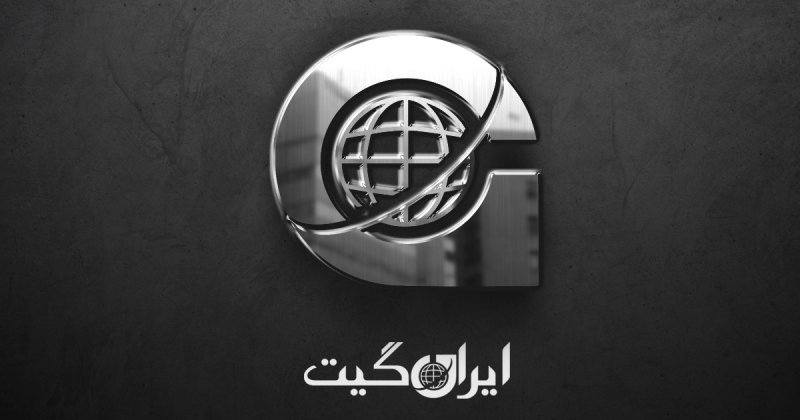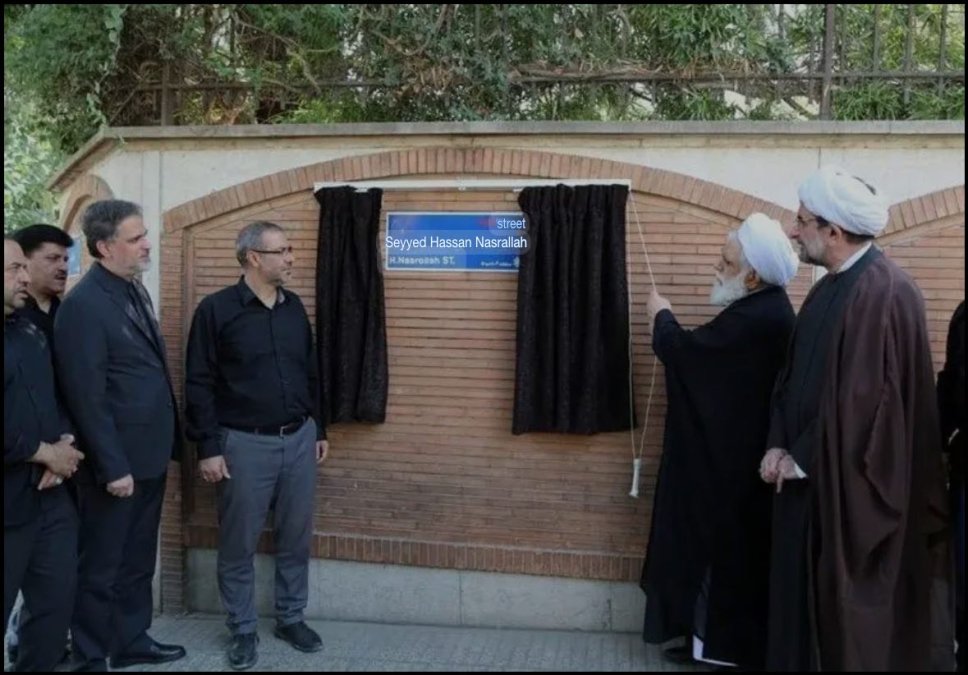Tehran’s unstable history of street name changes in the context of politics and ideology
Tehran’s unstable history of street name changes in the context of politics and ideology
With the gradual strengthening of relations between Tehran and Cairo, finally, after more than twenty years, on Tuesday, July 14, 2025, the name Khalid Islambouli was removed from a street in district 6 of Tehran, and this street was renamed to Martyr Sayyed Hassan Nasrallah, the deceased leader of Hezbollah Lebanon. In previous years, naming a street after Khalid Islambouli had caused dissatisfaction and protest from the Egyptian government, and repeated efforts by Tehran city councils and Iran’s Ministry of Foreign Affairs to change this name had been fruitless.
Khalid Islambouli was an Islamic fundamentalist who assassinated Anwar Sadat, the then President of Egypt. Considering Ayatollah Ruhollah Khomeini’s strong opposition, the former leader of the Islamic Republic of Iran, to the Israel-Egypt peace agreement during Sadat’s era, this assassination was met with approval in Iran, and subsequently, a street was named after him. Ruhollah Khomeini, who had ordered the severance of relations with Egypt after the 1979 revolution, praised Khalid Islambouli for the revolutionary assassination of Anwar Sadat.
In an official meeting of the Tehran City Council about twenty years ago, the renaming of Khalid Islambouli Street was approved, and it was decided to rename it to the Martyrs of the Intifada. However, with the release of a statement by Ansar Hezbollah after the Friday prayers in Tehran, this change was postponed. Ansar Hezbollah wrote in their statement that two days ago, the Islamic City Council of Tehran, in a surprising turn and with a laughable reasoning, agreed to the request of the Ministry of Foreign Affairs to remove the name of Martyr Khalid Islambouli, an action whose disgrace is evident in the overwhelming excitement of the internal opponents of Imam [Khomeini] and the widespread welcome from the West, Zionists, and eternal enemies of Muslims.
Six years later, in 2011, after the Egyptian government came to power under the presidency of Mohamed Morsi, and upon the renewed request of the Ministry of Foreign Affairs, it was decided to change the name of this street to the Martyrs of the Egyptian Revolution, but again it did not materialize.
Nevertheless, over the years, most people have continued to refer to this street by its pre-revolution name, Vezara Street.
In another instance, after tensions in Iran’s foreign relations in January 2016, the name of Bustan Street near the Saudi Arabian embassy was changed by attackers to Baqir Nimr, a Shia cleric who was executed in Saudi Arabia.
However, following the protest from Iran’s Ministry of Foreign Affairs, another street in district one of Tehran was named after this cleric.
Another noteworthy point in the renaming of Tehran’s streets was the campaign to change Nofel Loshato Street to Mohammad Rasool Allah, which was proposed by protesters against the publication of cartoons of the Prophet of Islam in the Charlie Hebdo magazine in November 2020. The publication of these cartoons met with widespread anger in Islamic countries, including Iran. At that time, Zahra Nejadbahram, a member of the Tehran City Council, said that in the capital, there are many streets named after the Prophet, and changing the name of Nofel Loshato in response to the desecration of Prophet Muhammad is not appropriate. Once, the President of France invited Imam Khomeini, and the revolution was led from there, but now the President of France defends the desecration of the Prophet, and the problem is not with France but with its President.
She added that the naming of Nofel Loshato Street has roots in the political, social, and cultural transformations of the Islamic Revolution, and we should not overlook this capacity.
Ruhollah Khomeini, after being expelled from Iraq and before entering Iran, lived for a while in Nofel Loshato, on the outskirts of Paris.
Tehran, the capital of name changes. Over the past hundred years, Tehran has witnessed more changes in the names of its squares and streets than other cities in Iran.
Along with the transformation in Tehran’s urban structure, which involved the demolition of gates and old neighborhoods, in addition to naming new spaces, the names of many historical neighborhoods and squares in the capital were also changed.
Mohammad Papli Yazdi, a geography researcher and professor at the Sorbonne University, wrote in an article in the Geographical Research Quarterly on the occasion of the 200th anniversary of Tehran’s capital status that Reza Shah ordered the construction of wide streets and the first government buildings, and therefore considered it his right to choose names for squares and streets. However, the government still did not have full control over the city, and the naming of streets and passages was beyond his control.
During that period, along with new namings, the names of guilds, ethnic groups, social groups, and well-known Qajar figures were also removed from the passages. Among these namings, historical Iranian figures like Darius and Cyrus or Zoroaster and Mani appeared, but historical Islamic figures were absent. With the development of Iran’s foreign relations and the visit of leaders of other countries to Tehran, the names of some of them were placed on streets.
For example, after the presence of Soviet, British, and American leaders in Tehran, the names of three streets were changed to Stalin, Churchill, and Roosevelt, or simultaneously with the visit of the American President and the British Queen, two boulevards were named Eisenhower and Elizabeth, although considering Iran’s bitter historical memories of Russia and Britain, the names Stalin and Churchill were not favored.
This trend continued during the reign of Mohammad Reza Shah Pahlavi, and according to Papli Yazdi, during Mohammad Reza Pahlavi’s time, 66 streets and squares included the name of the king in various forms such as Shahanshah Aryamehr and the names of Shahpurs and members of his family, and some were also dedicated to political occasions like March 15 or royal symbols like Takht-e Tavous and Takht-e Jamshid.
With the victory of the 1979 revolution, the names of heroes and popular figures of the era were inscribed on the passages, from Mohammad Mossadegh and Mohammad Hanifnejad to Mirza Kuchak Khan and Gholamreza Takhti. With the strengthening of the new government, the names of many national and political figures involved in the struggle against the former regime and the revolution were gradually removed due to not aligning with the views of the new rulers.
For example, the name of Mossadegh Street was changed to Vali Asr, and Hanifnejad Street to Islamic Unity. Some of these changes were accepted by the people, like the conversion of Shahnaz Square to Imam Hossein or Shahyad Square to Azadi, but some, like the change of Toopkhaneh to Imam Khomeini, are still not used in the daily speech of Tehran’s people after 45 years. Papli Yazdi wrote that with the removal of Cyrus’s name from a street in Tehran and its change to Ali Shariati, Cyrus’s name was registered in many alleys in less sensitive areas.
Some streets have remained in a dual state between old and new names for half a century, like Takht-e Jamshid and Taleghani or Takht-e Tavous and Motahari, where some still use the previous name and others the current official name. Papli Yazdi states that one of the manifestations of people’s resistance to new names occurs when taxi drivers and public transport still use the old names.
The process of changing street and square names in developing countries accelerated with the formation of modern governments and the expansion of urbanization and urban renewal.
In some countries, rulers often came to power through coups or revolutions and carried out the process of naming cities with ideological motivations, which sometimes resisted the collective memory of local citizens, and old names were preferred over mandatory names. In Iran, with the beginning of the Pahlavi era and the urban modernization program, alongside a tendency towards nationalist ideology, in addition to naming new passages, many of the names of old neighborhoods and streets were changed, and the names of Pahlavi dynasty members or historical kings were placed on them.
After the Islamic Revolution, with the empowerment of revolutionaries and emphasis on Islamic ideology, once again, the names of many streets, highways, parks, and cinemas were changed, and the names of Iranian princes were replaced by religious figures and the names of revolutionary leaders from the global south.
The latest example was when it was proposed to name a part of Bistoon Street after Yahya Sinwar, the former leader of Hamas, but the negative reaction of Tehran’s people led the council to retreat. Narges Soleimani, a member of the city council, called it predictable.
Nuclear scientist or music professor
In April 2019, the Tehran City Council approved naming a street after Mohammad Reza Shajarian, the master of traditional Iranian singing. This resolution, which was fully supported by the then council members, initiated a tension that took nearly two years to implement and also faced objections after the naming. Mr. Shajarian sided with the protesters during the unrest of the 2009 presidential election, and the then President Mahmoud Ahmadinejad called them ‘dirt and dust.’ Shajarian also sang the song ‘Put Down Your Gun’ and asked the government not to treat the protesters violently.
After that, Shajarian was no longer able to hold concerts in Iran, and his funeral in 2020 faced restrictions. But even after the naming, some opponents symbolically changed the street name to Mohsen Fakhrizadeh, which was met with a negative reaction from his family, who stated that Fakhrizadeh himself was interested in Iranian art and music.
The Tehran governorate reacted by stating that both the naming of the street after Shajarian was illegal and the symbolic action of changing it lacked legal validity. The then governor said that until an official resolution is issued, confirmation or announcement does not occur, such an action is not legal, and the municipality installed the sign illegally. Mohsen Fakhrizadeh was a key figure in Iran’s nuclear program and was assassinated in Absard, Damavand, in 2020.

